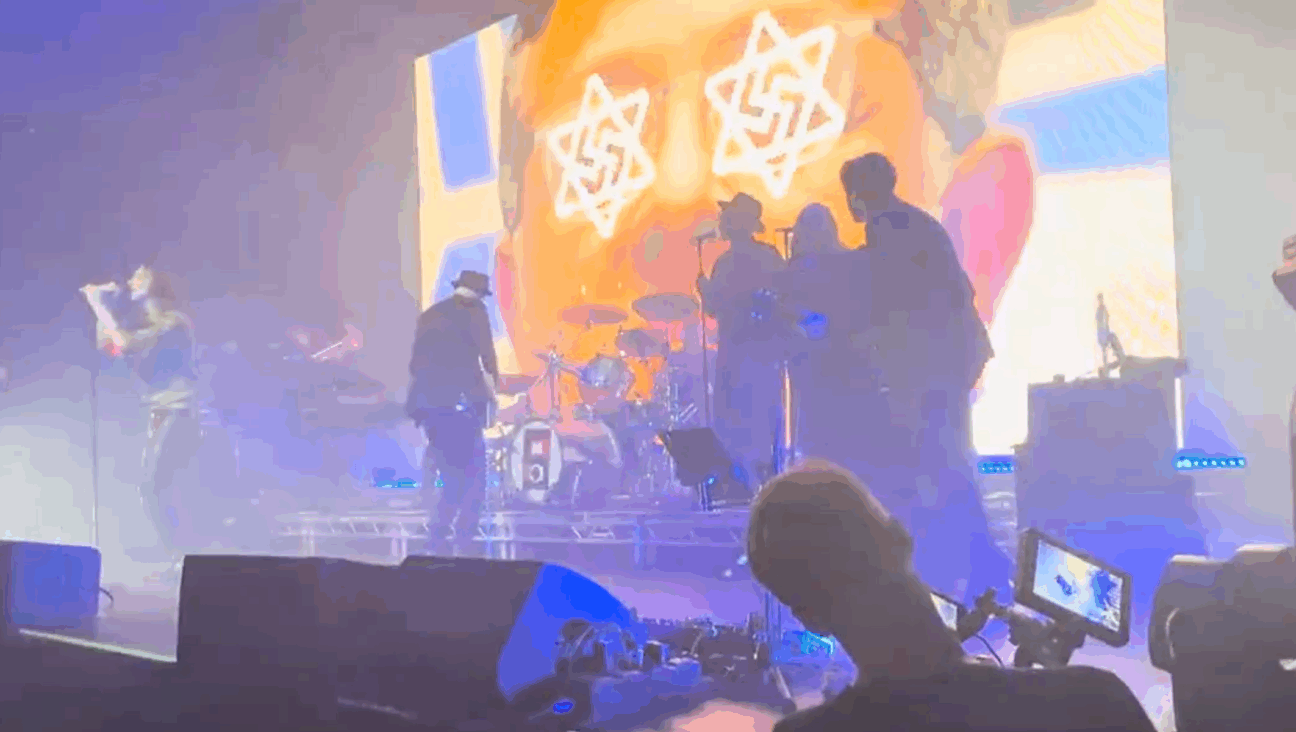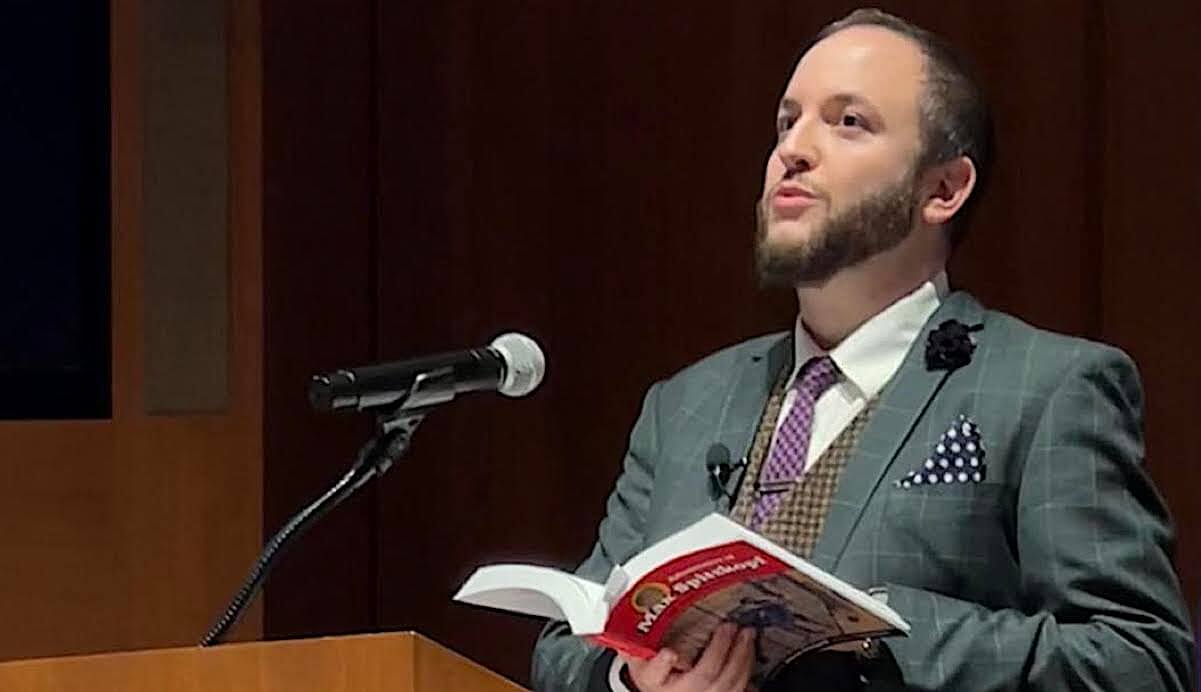Exhibiting Greatness in the Capital of the Yiddish World
VILNIUS, Lithuania — Rachel Kostanian recalls hearing Lithuanian guides leading tourists through the streets of this city: “They would be speaking with such pride: Here is the palace, here is the castle, and here is the museum of this and that,” said Kostanian, a longtime Jewish resident of this Baltic capital. “And I would think, what about us? Where is our place?”
Thanks to Kostanian and her colleagues, Lithuania’s Jews now have a new place to call their own in the heart of the city once known as “the Jerusalem of the north.” This week, as vice director of the Vilna Gaon Jewish State Museum, she opened the first permanent exhibition of Jewish art and culture at the museum’s Center of Tolerance on Vilnius’s broad Naugarduko Street. The late-September opening was timed to coincide with the anniversary of the 1943 liquidation of the ghetto in Vilnius, known in Yiddish as Vilna.
Looking out her office window at the pastel facades glowing in the afternoon light, she stopped to admire the spire-dotted city. “Beautiful,” she noted, “and sad.”
The sadness of Vilnius is personal for Kostanian, who lost virtually all her extended family as a child during the Holocaust. But it is also a communal sadness, as more than 90% of Lithuania’s Jews perished during World War II. After the war, only a handful of survivors returned; Kostanian — who had escaped to Russia with her mother — was among them. Former inmates of the ghetto crept into the smoking ruins and retrieved books, documents and religious objects that they had risked their lives to conceal years earlier, she recalled, collecting the items in a newly created Jewish museum.
“Carrying these Jewish artifacts on little carts,” Kostanian said, “they would smile and say, ‘This is our Louvre.’”
But the small museum created by these survivors lasted only until 1949, when Soviet authorities closed its doors. Some of its holdings were displayed in other museums — including the Museum of Atheism installed in a local church. Others were placed in storage or sold to antique shops.
Finally, in the late 1980s, on the eve of Lithuania’s independence from the Soviet Union, the nation’s few remaining Jews began to organize a rediscovery. “We began to talk about our huge heritage,” Kostanian said, “and the need to preserve and study it.”
In 1989, a Jewish museum opened once again. After decades of working as an English teacher and translator, Kostanian quit her job and threw herself into the task of gathering up the remnants of Lithuanian Jewish history.
That history is huge, indeed. Jews arrived in this Baltic land no later than the 14th century. By 1900, they constituted one-third of the population of Vilnius, which was considered “the capital of the Yiddish world.” The streets pulsed with shops and theaters, schools and libraries. The community supported a wide range of newspapers, vibrant religious sects and social movements.
It is this bustling Litvak world that comes to life in the airy, spacious halls of the exhibition that opened this week. “We are telling the story of our great Europeans who were so creative, brave and free,” museum director Emmanuel Zingeris said. “They were killed in their glory. It is our task to reconstruct the greatness.”
The greatness on display in the new exhibition is nothing if not diverse. Here, together in one place for the first time, are artistic treasures spanning the centuries. One wall is devoted to a unique expression of folk art — a miniature throne of King Solomon, complete with carved wooden eagles, lions and human figures in faded costumes trimmed with gold braid. Such work once fed the imagination of artists like Chagall and Soutine.
On another wall, oils, drawings and woodcuts by two-dozen Lithuanian Jewish artists illustrate the eclectic range of creative currents that swirled through Europe before the war. Particularly poignant are sketches by Samuel Bak, exhibited in the Vilna Ghetto when the precocious artist was only 9; today, Bak is internationally renowned as a powerful portrayer of Holocaust themes. The drawings of Esther Lurie depict daily ghetto life vividly, while the work of the late Rafael Chvoles, painting just after the war, evokes the ruins of the Jewish quarter.
A third wall displays fragments rescued from the capital’s Great Synagogue, which was damaged by bombs and bulldozed after the war. Zingeris has launched a controversial campaign to reconstruct the grand 17th-century stone building.
Kostanian hopes the new exhibition will attract not only visitors from abroad, but also Lithuanians of all ages. In a hallway adjacent to the new installation is the museum’s traveling exhibition, Jewish Life in Lithuania, with 30 colorful panels that have served as a focal point for community education in a dozen Lithuanian cities and towns.
Since opening in 2001, the Center of Tolerance has hosted numerous temporary exhibitions, concerts and symposia. Now, with the permanent exhibition, it becomes the centerpiece of the Vilna Gaon Jewish State Museum, which maintains two other locations in town: the Green House, with an exhibit about the Holocaust, and the Jewish Community Building, with a display honoring “Righteous Gentiles” who rescued Jews from the Nazis. The museum also oversees a memorial at the mass murder site in nearby Paneriai (Ponar), and a site in the town of Druskininkai honoring Jacques Lipchitz, the Lithuanian-born sculptor. Among books published by the museum is Kostanian’s own “Spiritual Resistance in the Vilna Ghetto” (2002).
The new exhibition is only one sign of the Jewish revival in progress in Lithuania today. Jews and gentiles alike — albeit in small numbers — are exploring the truth about the Holocaust and addressing issues of restitution, memorialization and restoration.
The way forward is complicated by Lithuania’s complex 20th-century history, with its extraordinary clashes of fascism, communism and nationalism. Storms of antisemitism erupt periodically, and the Jewish community itself — totaling fewer than 5,000 people — is not immune to division (see story, page 4).
Nonetheless, the Yiddish Institute at Vilnius University is flourishing,;a newspaper and a school are thriving, scholars are publishing books and articles, and newly developed educational curricula on the Holocaust have won international acclaim.
As for Kostanian, as she works to make her heritage accessible to visitors and local residents, she feels she has found her true calling. “This is what I wanted to work for,” she said. “This is what I am passionate about.”
Emerging from her office after a long day, she paused in the doorway under the white Baltic sky and smiled. “It is a healing to my heart,” she said.

















